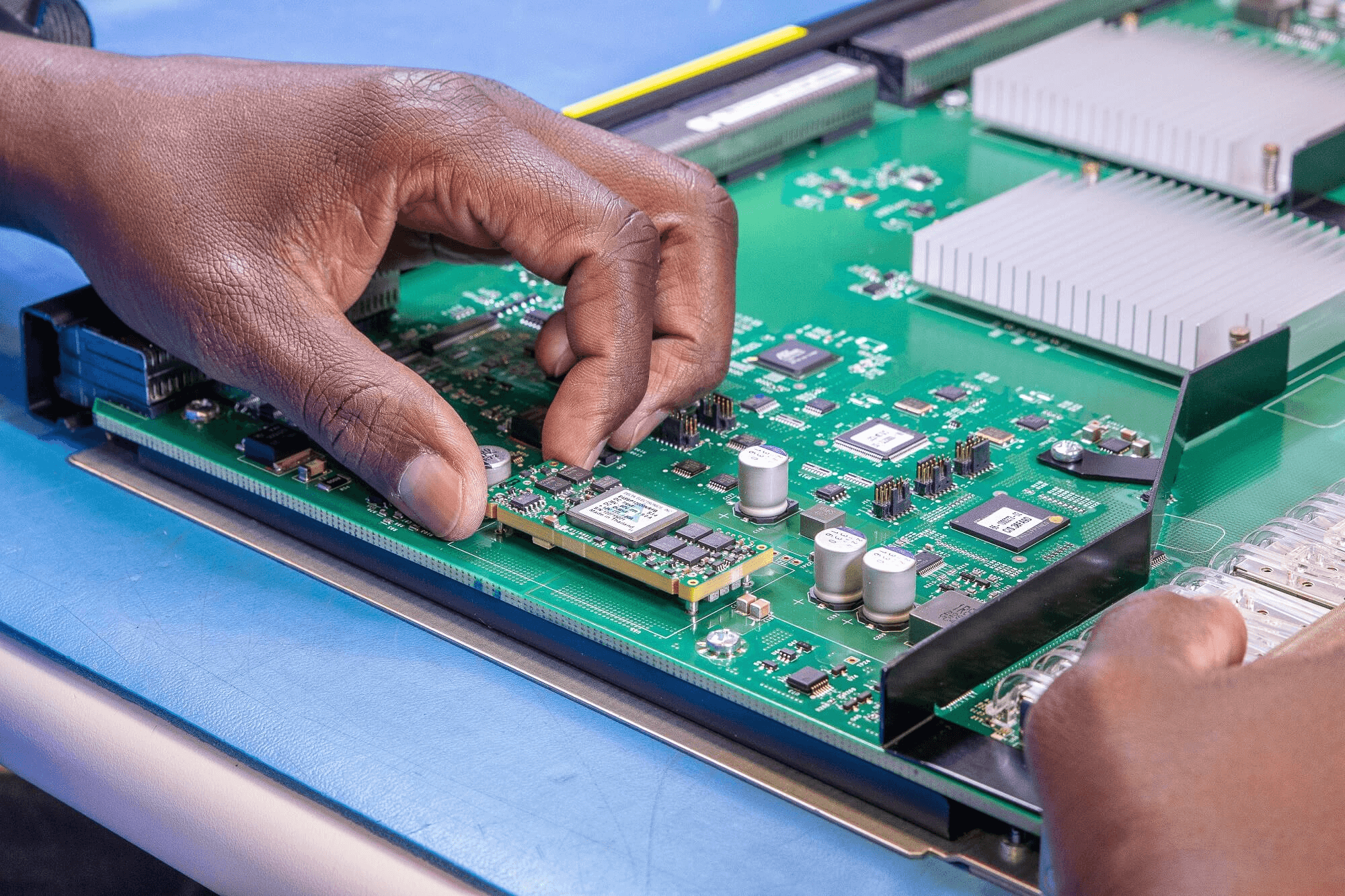Nobody likes the waiting game, especially when it comes to technology. It’s one thing when there’s a delay with the new monitor you bought for the breakroom due to a supply chain issue. But it’s quite another when your business-critical enterprise servers get stuck in a port halfway around the world. Such low-volume, high-mix parts and products are essential to operations and business continuity, so their “stock-out” costs can be astronomical. Supply chain managers must ensure that the high-dollar systems arrive on time while maintaining a flow of replacements for use when parts eventually malfunction. Fortunately, there are many ways businesses can lower cost management through supply chain best practices — including a strong depot repair services strategy.
You’ll Need Replacement Parts. Is Your Supply Chain Up to the Task?
Understandably, end customers are reluctant to replace well-functioning, mission-critical, high-end equipment simply because one component or subsystem stops working. However, that equipment can have a years-long lifecycle that extends well after your manufacturing teams and processes have moved on to the next iteration or innovation, no longer supporting that older piece of equipment.
In order to provide ongoing support that keeps customers loyal and satisfied, there are two primary phases of support to consider when addressing replacement parts:
- Support while the product or component is still in production
- Support as the product or component reaches end of life and manufacturing has ceased
When parts are still in production, they’re generally easier to get your hands on. Lead times may fluctuate, but there is a high level of confidence that components will be available when needed. Once you reach the second phase, however, it’s a whole different ballgame, because customers who bought the older product still need support — potentially for years.
When this happens, it’s common to order a lifetime buy of older product parts and components as the manufacturing period ends. But filling your supply chain with a lifetime buy can be an expensive proposition, requiring significant inventory investment, as you’ll need to be prepared to purchase a large batch of parts to sustain the customer support needs throughout the remaining support period. And your lifetime buy forecast is highly likely to be off — it can be a high-stakes, no-win situation for your company. When will a component break? When will a more far-reaching defect need to be addressed? When will a technology innovation prompt customers to tap into your trade-in/trade-up program? You will either end up with too many parts — and face a costly write-off — or you will be short on parts, leaving your customers without critical support.
Understanding the true cost of replacement parts is essential to avoid over- or understocking the components you think you’ll need down the road. Inventory expenses average 20% to 30% of inventory value, so all aspects of obtaining and carrying that inventory must be closely considered, including:
- The products themselves (purchase price)
- Warehousing, labor and administrative expenses
- Shipping, handling and other transportation costs
- Depreciation, obsolescence and opportunity costs
- Taxes and insurance
The Value of Comprehensive Repair Services Goes Well Beyond Fixing Components
Predicting when a part will fail is never an exact science. Instituting a well-thought-out depot repair strategy shifts the conversation from one based on guesswork to one grounded in certainty — in knowing that replacement parts will be readily available, as will the engineers and technicians needed to perform the work. An experienced depot repair services partner can ensure both — enhancing repair quality and service delivery, reducing downtime and improving profitability without an original equipment manufacturer (OEM) having to take on the expense of building its own depot repair services infrastructure.
While an in-house approach can be a viable, albeit costly, solution for some companies, it is not without its challenges, from limited visibility and expertise to unpredictability and cost inefficiencies. That’s why many OEMs prefer outsourcing to maintain or increase internal focus on technology production and innovation.
Outsourcing depot repair services can also give OEMs the flexibility to adapt to evolving manufacturing preferences and market conditions. Even in the face of the most dramatic and unexpected supply chain incidents — think global travel bans and shutdowns, blocked canals and ports and disruptive geopolitical issues — end customers still expect high-quality products and services in a timely manner. OEMS can differentiate themselves when the stakes are high via the supply chain agility, global sourcing and supplier relations that an experienced global depot repair services partner provides.
Widespread changes such as digital transformation and the adoption of Industry 4.0 may be better addressed by outsourcing non-core capabilities, including comprehensive depot repair services. Innovative technology such as artificial intelligence (AI), robotics, blockchain and data analytics are helping companies modernize their supply chains to boost efficiency and improve agility, among other benefits essential to lowering inventory costs. But doing so on a large scale can be incredibly disruptive. Entrusting repair services to a partner for whom supply chain modernization is second nature preserves business continuity, cost savings and a seamless customer experience whether parts are in ample supply.
Further, for sustainability-minded OEMs, engaging a global repair services partner can mean the difference between participating profitably in the circular economy or risking financial and reputational damage from poorly executed environmental efforts. An ecologically sound approach that centers on reusing, repairing and recycling whenever feasible creates a valuable source for replacement parts. And when it comes time for end customers to upgrade, linking repair services to trade-in/trade-up services ensures that the stash of viable spares will keep growing.
Strengthen Your Supply Chain and Depot Repair Services With Shyft
Technology repair services encompass far more than the actual repair of a product. Shyft Global Services helps OEMs maintain customer loyalty and reduce costs through scalable, flexible depot repair services that eliminate the need for multi-year, risky lifetime buy forecasts. Here are just a few of Shyft’s depot repair capabilities:
- Comprehensive repair services, including reverse engineering, root cause analysis and component-level repair
- Depot inventory management encompassing flexible supply chain modeling, spare parts planning, stocking-level maintenance, OEM/ODM returns management and compliant e-cycling
- Program management and reporting that provide visibility into your global logistics operations and depot repair services anytime, anywhere
Dive deeper into building a well-rounded repair strategy for your company in the comprehensive guide: The Key Spokes of a Full Circle Repair Strategy.
About the Author
 Ken Ueltzen is a Sales Leader within the repair services organization of Shyft Global Services. His professional experience spans more than 40 years, including key roles in sales and marketing, business development and strategy, manufacturing operations and engineering. He works closely with service delivery experts in Shyft’s state-of-the-art Roseville, California facility, which is home to a wide range of depot repair service capabilities.
Ken Ueltzen is a Sales Leader within the repair services organization of Shyft Global Services. His professional experience spans more than 40 years, including key roles in sales and marketing, business development and strategy, manufacturing operations and engineering. He works closely with service delivery experts in Shyft’s state-of-the-art Roseville, California facility, which is home to a wide range of depot repair service capabilities.





